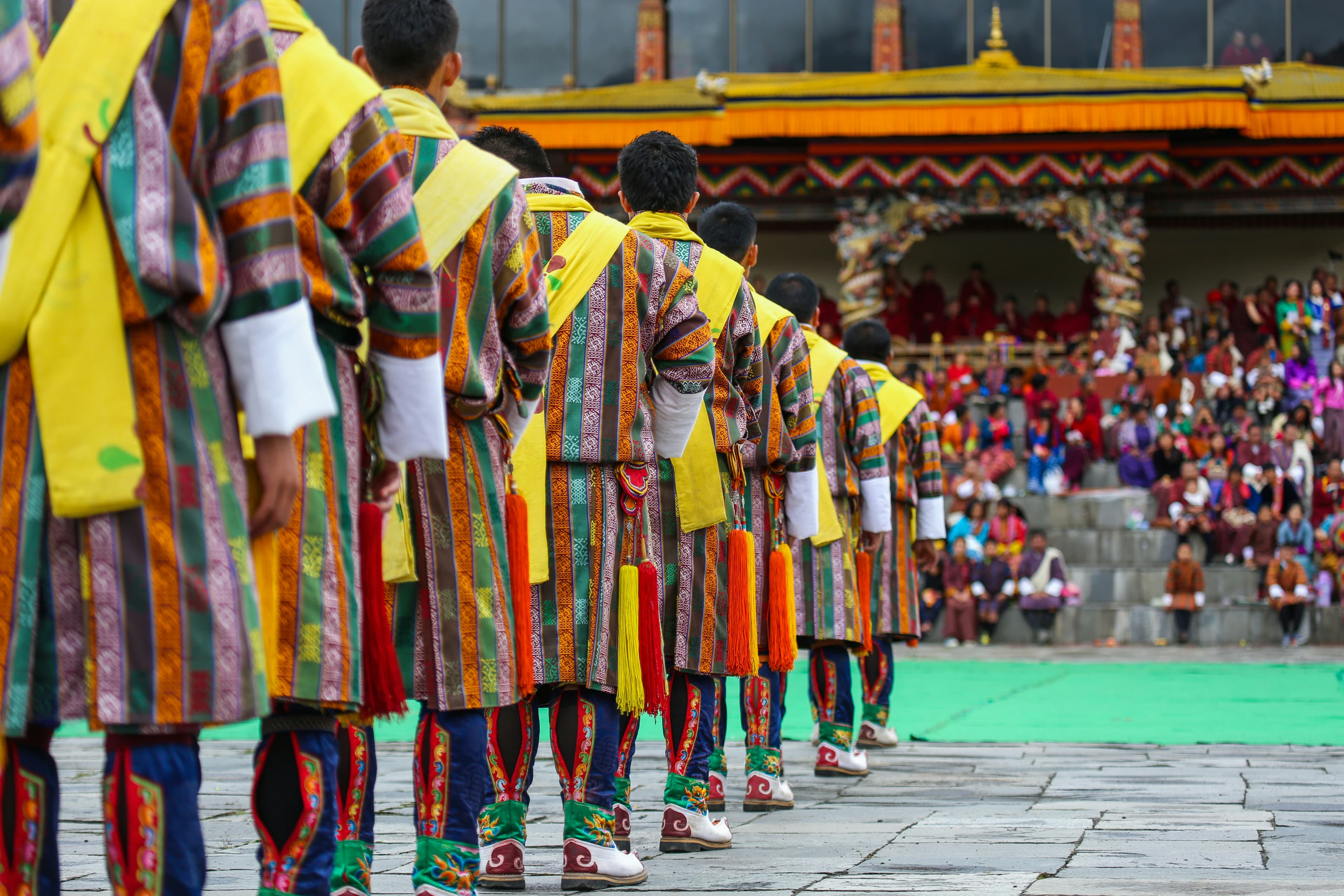
Paro Tshechu is one of Bhutan’s most vibrant and spiritually significant festivals, held annually at Rinpung Dzong in Paro. Celebrating Guru Rinpoche, the festival features sacred Cham dances, colorful masks, and traditional music, offering a mesmerizing glimpse into Bhutanese culture. The highlight is the unveiling of the Thongdrel, a massive religious silk painting, believed to bring blessings to all who see it.
Nestled in the heart of the majestic Himalayas, Bhutan is a land of vibrant traditions, deep spirituality, and breathtaking landscapes. Among its many cultural festivals, Paro Tshechu stands out as one of the most anticipated and revered events. Held annually in the historic town of Paro, this festival offers visitors a unique glimpse into Bhutan’s rich heritage, colorful traditions, and deep-rooted Buddhist beliefs.
Paro Tshechu is a religious festival that honors Guru Rinpoche, the great Buddhist master who introduced Vajrayana Buddhism to Bhutan in the 8th century. The festival is held at Rinpung Dzong, an ancient fortress that serves as a monastery and administrative center for the region. Over several days, monks and laymen come together to perform sacred masked dances, known as Cham, which depict stories of good triumphing over evil and impart moral teachings to the spectators.
One of the defining features of Paro Tshechu is the mesmerizing display of elaborate costumes and vibrant masks worn by the dancers. These dances are not just performances but spiritual rituals, believed to cleanse negativity and bring blessings to those who witness them. The energy of the festival is heightened by traditional music played on cymbals, horns, and drums, creating an atmosphere that is both enchanting and spiritual.
As the festival progresses, the excitement builds up to its most sacred moment—the unfurling of the Thongdrel, a massive silk Thangka painting depicting Guru Rinpoche. Displayed only at dawn on the final day of the festival, viewing the Thongdrel is believed to cleanse sins and bring immense spiritual merit.
For travelers, attending Paro Tshechu is an unforgettable experience. It offers the perfect opportunity to immerse oneself in Bhutanese culture, witness centuries-old traditions, and engage with the warm and welcoming locals. Here are some must-do activities to make the most of your visit:
Arrive Early: The festival attracts both locals and tourists, so arriving early ensures a good viewing spot.
Dress Respectfully: Bhutanese people take their traditions seriously, so wearing formal attire (or renting a traditional Gho or Kira) adds to the cultural experience.
Capture the Moments: Photography is allowed, but always be mindful of the sacredness of the event.
Enjoy Local Cuisine: The festival grounds are surrounded by food stalls offering delicious Bhutanese dishes like Ema Datshi (chili and cheese) and Suja (butter tea).
Explore Paro: Beyond the festival, Paro is home to stunning sites such as Taktshang (Tiger’s Nest) Monastery, Paro Museum, and Drukgyel Dzong.
Paro Tshechu typically takes place in March or April, making it an ideal time to visit Bhutan. The weather is pleasant, with clear skies and blooming flowers, creating a picturesque backdrop for this grand celebration. It’s also one of the few times when Bhutanese people from different regions gather in their finest traditional attire, adding to the festive charm.
Paro Tshechu is more than just a festival—it is a spiritual awakening, a cultural immersion, and a visual delight all in one. Whether you are a traveler seeking adventure, a culture enthusiast eager to learn, or a spiritual seeker looking for enlightenment, this festival promises an experience that will stay with you forever.
Have you attended Paro Tshechu or any other Bhutanese festival? Then book your trip now...